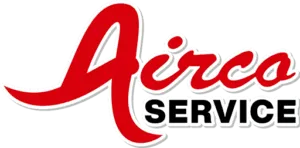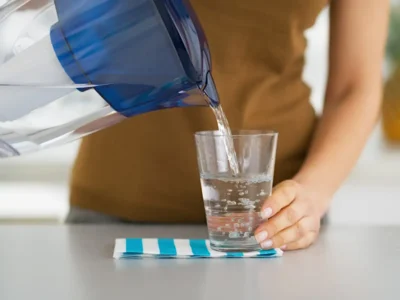Clean, safe drinking water is fundamental to maintaining good health and ensuring your family’s well-being. With growing concerns about water quality and the increasing presence of contaminants in municipal water supplies, many homeowners are turning to water filtration systems as a reliable solution. However, with numerous options available in the market, selecting the right system for your specific needs can feel overwhelming.
Understanding Your Water Quality Needs
Identifying Common Water Contaminants
Before investing in any filtration system, it’s crucial to understand what you’re filtering out. Municipal water supplies can contain various contaminants, including chlorine, lead, bacteria, viruses, pesticides, and industrial chemicals. Well water may have different issues, such as iron, sulfur, nitrates, or bacterial contamination. Each type of contaminant requires specific filtration technologies to effectively remove it.
The taste, odor, and appearance of your water can provide initial clues about potential problems. Metallic tastes might indicate heavy metal contamination, while chlorine odors suggest chemical treatment residues. Cloudy or discolored water could signal sediment or mineral issues that need addressing.
Getting Your Water Tested
Professional water testing is the most reliable way to determine your specific filtration needs. Many local health departments offer basic testing services, while private laboratories can provide comprehensive analyses. Testing will reveal the exact contaminants present in your water supply and their concentration levels, allowing you to make an informed decision about filtration requirements.
Home testing kits are also available for basic screening, though they may not detect all potential contaminants. These kits can serve as a starting point for understanding your water quality, but professional testing remains the gold standard for comprehensive analysis.
Types of Water Filtration Systems
Point-of-Use Systems
Point-of-use systems filter water at specific locations where it’s consumed, typically at kitchen sinks or individual faucets. These systems are generally more affordable and easier to install than whole-house solutions, making them popular choices for many homeowners.
Countertop Filters: These portable systems sit on your counter and connect directly to your faucet. They’re ideal for renters or those who want a simple, no-installation solution. Countertop filters can effectively remove chlorine, sediment, and some heavy metals, though their capacity varies by model.
Under-Sink Systems: Installed beneath your kitchen sink, these systems provide filtered water through a dedicated faucet. They offer higher filtration capacity than countertop models and don’t take up counter space. Under-sink systems can accommodate multiple filtration stages for comprehensive contaminant removal.
Faucet-Mounted Filters: These compact filters attach directly to your existing faucet and offer convenient switching between filtered and unfiltered water. While they’re affordable and easy to install, they may reduce water pressure and have limited filtration capacity compared to other options.
Point-of-Entry Systems
Point-of-entry or whole-house systems filter all water entering your home, providing treated water to every tap, shower, and appliance. While they require higher initial investment and professional installation, they offer comprehensive protection and convenience.
Whole-House Carbon Filters: These systems excel at removing chlorine, volatile organic compounds, and improving taste and odor throughout your home. They’re particularly beneficial if you’re concerned about chlorine exposure during showering or want to protect appliances from chemical damage.
Reverse Osmosis Systems: Whole-house reverse osmosis systems provide the highest level of contaminant removal, including dissolved solids, heavy metals, and microscopic contaminants. However, they also remove beneficial minerals and require significant water pressure and storage capacity.
Filtration Technologies Explained
Carbon Filtration
Activated carbon is one of the most common and effective filtration methods for removing chlorine, volatile organic compounds, and improving taste and odor. Carbon filters work through adsorption, where contaminants stick to the carbon’s porous surface. Different types of carbon filters, including granular activated carbon and carbon block filters, offer varying levels of effectiveness and flow rates.
Reverse Osmosis
Reverse osmosis systems force water through a semi-permeable membrane that blocks contaminants while allowing water molecules to pass through. This technology removes a wide range of contaminants, including dissolved solids, heavy metals, bacteria, and viruses. However, the process also removes beneficial minerals and produces wastewater as a byproduct.
UV Sterilization
Ultraviolet light systems disinfect water by destroying bacteria, viruses, and other microorganisms without adding chemicals. UV systems are particularly effective for well water or situations where biological contamination is a concern. They require pre-filtration to remove sediment that could shield microorganisms from the UV light.
Ion Exchange
Ion exchange systems swap harmful ions in water with harmless ones, making them particularly effective for removing heavy metals and reducing water hardness. These systems are often combined with other filtration technologies for comprehensive treatment.
Factors to Consider When Choosing a System
Capacity and Flow Rate
Consider your household’s daily water consumption and peak usage times when selecting a filtration system. Systems with inadequate capacity may struggle to meet demand during busy periods, resulting in reduced water pressure or bypassing filtration altogether. Calculate your family’s needs and choose a system that can handle your maximum daily usage with room to spare.
Maintenance Requirements
All filtration systems require regular maintenance to function effectively. Filter replacement schedules, cleaning requirements, and ongoing costs should factor into your decision. Some systems need filter changes every few months, while others may last a year or more. Consider the long-term maintenance costs and your willingness to perform regular upkeep.
Installation Complexity
Point-of-use systems often allow for DIY installation, while whole-house systems typically require professional installation and may need plumbing modifications. Factor installation costs and complexity into your decision, especially if you’re not comfortable with plumbing work.
Budget Considerations
Water filtration systems range from affordable countertop models to expensive whole-house installations. Consider both initial costs and ongoing expenses, including filter replacements, maintenance, and potential professional servicing. Calculate the total cost of ownership over several years to make an accurate comparison.
Making Your Final Decision
Matching Technology to Your Needs
Based on your water test results, match the appropriate filtration technology to your specific contaminants. If chlorine is your primary concern, carbon filtration may be sufficient. For comprehensive contaminant removal, consider reverse osmosis or multi-stage systems. Bacterial contamination might require UV sterilization in addition to other filtration methods.
Professional Consultation
When in doubt, consult with water treatment professionals who can analyze your test results and recommend appropriate solutions. They can also provide installation services and ongoing maintenance support, ensuring your system operates effectively for years to come.
Long-term Value
Consider the long-term benefits of cleaner water, including potential health improvements, better-tasting food and beverages, and protection for your plumbing and appliances. A quality filtration system is an investment in your family’s health and your home’s infrastructure.
Conclusion
Selecting the right water filtration system requires careful consideration of your specific water quality issues, household needs, and budget constraints. By understanding the available technologies and matching them to your requirements, you can ensure your family enjoys clean, safe, and great-tasting water for years to come. Remember that water quality can change over time, so periodic testing and system evaluation will help maintain optimal performance and protection.
Don’t let poor water quality compromise your family’s health and comfort any longer. As experienced plumbing professionals, we understand that every home’s water filtration needs are unique. Our team can help you navigate the complex world of water treatment systems and find the perfect solution for your specific situation. Contact us to schedule your comprehensive water analysis and free consultation. Your family deserves the peace of mind that comes with knowing your water is clean, safe, and healthy.



 How Whole-Home Generators Keep You Powered During Storms
How Whole-Home Generators Keep You Powered During Storms